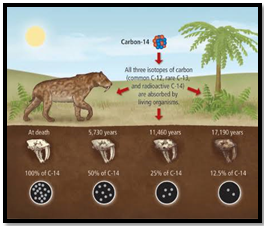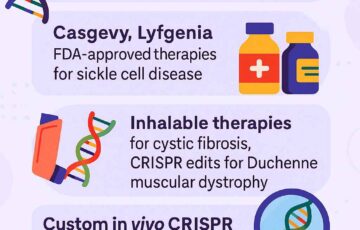HOW RADIOCARBON DATING REVOLUTIONIZED SCIENCE
About Radiocarbon dating
Radiocarbon dating is a method determining the age of organic materials by measuring the decay of carbon-14 isotopes. This technique helps estimate the time elapsed since the death of the organism, offering insights into archaeological and geological timelines.
Source: Learning Geology
Understanding the Past:
- Radiocarbon dating transformed various scientific fields, providing a measurable view of the past.
- It clarified human migration, the rise and fall of civilizations, and Earth’s climatic changes.
Radiocarbon Dating Basics:
- Carbon-14 isotope, created by cosmic rays, serves as a key element.
- Plants absorb carbon-14 through photosynthesis, entering the food chain.
- When living organisms die, carbon-14 decay enables dating by measuring remaining amounts.
| What are Isotopes?
Isotopes are variants of a chemical element with the same number of protons but different numbers of neutrons. They exhibit similar chemical properties but may have distinct atomic masses. |
Evolution of Dating Techniques:
- Early techniques, like Geiger counters, evolved into sophisticated setups, such as Accelerator Mass Spectrometry (AMS). AMS enhances precision, allowing dating of minute samples, impacting fields like geology.
| What is Geiger counters ?
A Geiger counter is an electronic device utilized to detect and measure ionizing radiation. |
Significance and Ongoing Refinement:
- Radiocarbon dating introduced objective dating to organic remains, revolutionizing archaeology and geology.
- Continual refinements address flaws; recent studies propose improved time resolution for more accurate dating.

 Source: Learning Geology
Source: Learning Geology


